Sometimes That Mutt gets emails from people asking, what can I do if my dog barks in the car?
Dogs who bark excessively in the car are not only annoying, they can be dangerous and even cause an accident.
Just to clarify, I’m referring to obnoxious, repetitive and excessive barking. Not a little excited bark here and there. That’s totally acceptable, in my opinion.
I’m Barbara and I write regularly for That Mutt. I’m a blogger, raw feeder and dog walker and maintain the blog K9sOverCoffee.com. This blog post contains affiliate links.
Reasons my dog barks in the car or whines in the car
Let’s start by looking at the reasons why your dog might be barking or whining in the car.
Since every dog has different triggers, I suggest you pay close attention to the moment your dog starts barking or whining and write it down.
Once you know what causes your dog to start barking in the car, you can work on proactively addressing it.
For example, some dogs only bark if you get out of the car without them. Others bark nonstop due to being overly excited or anxious.
1. My dog barks in the car due to excitement!
There are different reasons for overly excited barking in the car.
For example, dogs who are allowed to roam around freely in the car can quickly become overstimulated and bark at everything they see as a result.
They’ll see a UPS truck out one window and go bark bark bark, a dog walker out the other window and again bark bark bark, someone riding a bike out the next window and more bark bark bark, and so on.
You get the idea.
Some dogs are more sensitive to movement and get overly excited easier. Herding breeds, for example, not to pick on them!
2. Dogs bark in the car out of anticipation
Your dog might be anticipating a fun adventure and can hardly contain himself!
Lindsay, the owner of this blog, has a weimaraner named Remy who will bark when they’re on their way to a trailhead, for example. He LOVES hiking!
Does your dog only bark when the car slows down or comes to a stop like at a traffic light? That could be excited barking at the prospect of arriving at the final destination.
Many dogs know that car rides mean going to fun places like the dog park or a coffee drive thru that hands out dog treats.
If they don’t understand the concept of impulse control, they’ll bark their heads off in anticipation of the fun.
3. My dog barks in the car due to fear
On the flip side, some dogs only get to go for car rides when they have an unpleasant appointment at the vet’s or the groomer’s.
These dogs won’t associate car rides with fun, but rather with fear. So instead of barking in excited anticipation, they’ll bark with fearful presentiment.
Or the motion of the car in general might be what they are afraid of, especially if they did not go for lots of car rides when they were puppies.
4. Barking in the car due to anxiety
Your dog could also be experiencing anxiety when he’s left alone in the car during quick errands.
If he barks uncontrollably when you leave the car for a moment to pick up your dry cleaning, get gas or pee on a road trip, it could very well be separation anxiety related barking, even if it’s mild anxiety.
Ask yourself if your dog reacts similarly when you leave him home alone? Dogs with separation anxiety are so used to their owner being with them that they react intensely when they’re being left alone.
Symptoms besides barking are whining, drooling, panting, pacing and inappropriate eliminating.
Thankfully, this type of anxiety is usually fairly mild and can be worked through with some training techniques.
See Lindsay’s case study at the end of this article where she works with her dog Ace on his anxious barking in the car.
5. Some dogs bark due to motion sickness
Your dog could also be experiencing motion sickness on car rides.
When that happens, dogs are less likely to bark and more likely to whine. They may also pace or act lethargically. Other symptoms can be licking or smacking of lips, excessive drooling, vomiting or diarrhea.
Motion sickness is more common in younger dogs who haven’t been properly socialized to car rides, and whose sense of balance isn’t fully developed yet. But it can also be caused by medications and ear infections that affect a dog’s sense of balance.
If your dog suffers from motion sickness and there’s no way around car rides, I suggest you invest in a car hammock. It lines your backseat area (or cargo area) and makes clean up a lot easier and quicker.
Your vet can also prescribe the correct medication to help your dog feel better in the car. Please don’t make your dog just “put up with” motion sickness. They truly feel terrible so it’s best to get the right medication to help.
6. Some dogs bark due to barrier frustration
If your dog barks excessively when he sees other dogs, people, kids, or even cars drive by, he could be reacting out of a feeling of frustration.
The frustration that he can’t get to the other dog or whatever else it may be because the car he’s in functions as a barrier between him and the other dog or person.
If he lunges in addition to his barking, he may also be acting out of fear. Lunging is a common symptom of fearful dogs that’s particularly common when they’re leashed and encounter another dog. For example, on a walk, but also in a car.
7. My dog barks in the car to protect me or guard me
If your dog barks and growls when someone’s approaching the car, he might also be protecting his valued resource – the car – or YOU.
It’s OK for a dog to let out a few quick barks to say hey, don’t come any closer, in my opinion. But anything more that resembles a dog going nuts deserves some attention and a training plan.
How to handle my dog barking in the car
Once you have a good idea why your dog is barking or whining in the car, it’s time to implement some changes when it comes to car rides with your pup.
Here are some general ideas to consider:
1. Seat belt or crate to stop a dog from barking in the car
I’m a huge fan of doggie seat belts and own several myself.
I first started using them with my previous two boxer mixes, and now my current Feist mix uses them as well.
One end of the dog seat belt either buckles into the seatbelt outlet of the car, the latch bar behind the passenger seats, or a headrest. The other end attaches to your dog’s harness. It’s that simple and highly effective because the seatbelt keeps your dog in place and from roaming around!
Mighty Paw carries a chew proof seat belt that’s made from strong, braided steel wire. That way you can even safely transport strong chewers or puppies.
2. Consider crating your dog in the car to stop him from barking
A crate is also highly effective at keeping dogs from roaming around in the car as long as they’re secured. That way, they won’t slide around when you have to hit the brakes. However, it’s only going to work for you if you have a large enough car, SUV or truck. It might not work at all if you have several larger dogs.
If you can use a crate and your dog still barks his lungs out, try covering the crate with a thin blanket in order to block your dog’s view. That way, he won’t be able to react to visible stimuli.
2. Kong toy or chew
In addition to seat belts or crates, try offering your dog a filled Kong toy or a similar doggie chew.
Fill the Kong with something super yummy, like peanut butter or pumpkin purée mixed with some of his regular food. You can also freeze it overnight. That way it’ll last even longer.
If your dog only barks when you are parked or when someone approaches your car, you could have someone sit in the back with your dog and get their attention on the Kong whenever a person or dog walks near the car.
You could also try handing your dog the Kong before you leave the car to run a quick errand.
3. Many short, boring trips
If your dog is overwhelmed by longer car rides, you’ll have to hit the reset button.
Do that by going on many short and boring trips, and reward calm behavior.
For starters, you can literally just put your pup in the car and take him up your street and back home.
Go slowly so that you can safely treat to reward calm behavior. Of course it would even be more helpful if you had someone in the car with you to click and/or treat his calm behavior. For example, a family member or friend who sat right next to your pup.
4. Just sitting in the parked car
If going up and down your street is still too exciting for your pup, try just sitting in the parked car with him.
If your car is parked in the garage, start there. Otherwise begin in your driveway or similar parking spot. The goal is to reward calm behavior, so arm yourself with tasty, high-value treats like cut up hotdog or cheese and treat your pup when he’s not barking.
Start with short 2-3 minute sessions and slowly work your way up in time. Once your pup can manage 10 quiet minutes in the parked car, try going up your street again.
5. Lots and lots of exercise
Oftentimes, dogs are using excessive barking as a means for releasing their pent-up energy.
One way to nip this behavior in the bud is to offer lots and lots of physical and mental exercise. No, it’s not a magical solution, but a tired dog is much more likely to be calm and relaxed than one who’s full of energy.
Start by taking your dog for structured walks around your neighborhood or local parks.
By structured I mean walks where your dog has to follow certain rules. For example, don’t allow pulling and practice some obedience commands like “sit” or “down.” You can increase the intensity of those walks by having your dog wear a specific doggie backpack.
I also suggest taking your dog for a walk or play ball or frisbee with him before you take him for a ride. Again, a tired dog is much less likely to bark.
6. Teach the “quiet” command for dogs that bark in the car
Another way of getting your dog to stop barking in the car (or wherever, really) is to teach him the “quiet” command.
It’s best to practice at home where there aren’t that many distractions. Once your pup reliably listens to the command at home, you can practice outside where there’s more distractions.
For example, your backyard, front yard, your neighborhood, local parks and ultimately in your car!
To teach the “quiet” command, you’ll have to catch your dog when he takes a break from barking.
Reward the moment of silence by giving him a tasty treat.
Repeat and practice often, and associate a verbal cue with his silence. Say “quiet” or “shush” or whatever else you want to call it when he’s in-between barks.
You’ll want to gradually cut out the treats and only use verbal praise. That way, you’ll also be able to use the command when you’re alone in the car with your pup and can’t treat because you’re busy paying attention to the road.
7. Desensitization for dogs that bark at people, dogs, bikes, etc.
If your dog barks when he sees other dogs or when people approach the car, I would use a desensitization training approach.
This means, you expose your dog to very low levels of his “trigger” and reward calm behavior with high-valued treats (think, bits of hot dogs).
So, for example, if your dog tends to bark when someone walks within 5 feet of the car at a gas station, I would seek out areas where you can park further away from people. So, maybe the far end of a grocery store parking lot on a Sunday morning.
When a person is walking by, but ideally not close enough to trigger your dog, give your dog several small, high-valued treats to reward the calm, non-barking behavior.
Over time, you can work closer and closer to your dog’s triggers as he is successful. If your dog is not successful and starts barking, then you know you need to work a little further away from her trigger next time.
What to do if my dog barks when I leave the car
Some dogs are the perfect canine passengers UNTIL you’re getting ready to leave the car without them. As soon as you do, they turn into little barking machines!
Let me clarify that I’m not a proponent of leaving your dog unattended in the car for long periods of time.
That can be life-threateningly dangerous during the summer months, and dogs who are allowed to roam around in the car can also do boredom-related damage. Things that come to mind are chewed up e-breaks, door frames, or seat cushions. Yikes.
However, in my personal opinion, it’s perfectly fine to leave your pup in the car for a bit after he’s been exercised and watered and it’s safe to do so.
For example, when you need to run short errands like popping into the post office, picking up your dry cleaning or take out, or whatever else it may be.
As long as your pup gets plenty of fresh air and is secured in the car, he should be able to quietly accept your brief absence.
I left my dog in the car for one hour and she was perfectly quiet – here’s how I did it
I remember one instance when I took my pup Missy for a fun beach day here on our beautiful NC coast during spring.
Temperatures weren’t soaring yet, and after a full day of beach walks and playtime, I had dinner with a friend at a restaurant before driving back home.
Since the place didn’t allow dogs inside, I left Missy in my Jeep. I parked it right where I could see it from my table inside, and rolled the windows down so she got to enjoy the fresh breeze.
You know what she did after watching me walk into the restaurant? She laid down and slept. For the full hour that I was inside the restaurant, and she didn’t make one sound.
Now, this was possible because I had thoroughly exercised her for hours.
Missy also wore her seatbelt so she wasn’t able to roam around in the car, although honestly she probably wouldn’t have cared to do so either way because she was one pooped pup!
She was also used to going on frequent car rides and trips with me, so her doggie car etiquette was spot on. I’ll take a little credit here because I taught her what I expected from her.
Practice lots of short sessions
As is the case with everything in life, practice makes perfect.
Dogs who aren’t used to going for frequent car rides don’t know what’s expected of them as far as proper behavior is concerned.
They also don’t know that we’ll always come back for them. The only way they’ll learn to trust that we ARE coming back is to practice, practice, practice!
That’s why it’s very helpful to do this with lots and lots of short sessions. So, take your pup for a half hour walk (or longer if possible), then hop in the car with her and take her for a very quick ride.
Stop the car in a parking lot, for example a grocery store’s parking lot, and quietly get out of the car. Do this without talking to your pup or “explaining” your reason for getting out.
Make sure you carry high value treats on you to reward quiet behavior. You don’t need to go far away at all, just take one or two steps.
This will only take 1-2 seconds. If your dog is quiet during these 1-2 seconds, turn around and give her a treat.
Do this a few times, maybe 5 or 6 times, then drive back home and practice again the next day.
See Lindsay’s example at the end of this article, with her dog Ace.
Ignore your dog’s barking in the car
If your dog barks while you step away from the car, only take one step and stand still without facing your dog.
Then wait for a break in-between barks.
There WILL be one eventually.
The moment the barking stops, even if it’s just for one second, give her a treat.
Really wait for your dog to take a break in-between barks without talking to her or shouting at her.
I know it can be frustrating, but even when we’re yelling at our dogs, to them it means that we’re engaging with them.
You really need to completely ignore her.
She’ll eventually start to realize that treats only come when she’s quiet and not barking. Some dogs are very quick learners while others take longer to make the connection. The key to no barking frenzies is to be patient and consistent in your training rides.
Once your pup can be quiet for 1-2 seconds, slowly increase the amount of steps you take away from the car.
Kongs or chews
I’ve already mentioned filled Kong toys and chews, but I’ll mention them again. Both are great boredom busters and can help your dog refocus her attention. When you park the car, hand your pup the filled Kong or chew, then step out of the car.
If you have errands to run in the morning, you could skip your pup’s regular breakfast and then serve it in the Kong while you run your errands. Your pup will likely be even more attracted to it when he’s a bit on the hungry side.
Tools that can help along with training your dog not to bark
Tools can be very helpful in your training sessions. I already mentioned a few in the previous sections, but it’s also worth looking into the following ones.
Thundershirt
The thundershirt is an anxiety jacket that applies gentle, constant pressure to your dog’s body which has a calming effect. It was originally designed for dogs who are stressed out during thunderstorms, fireworks, and vet visits and to keep them from barking, whining and being destructive.
Thundershirts can also offer relief during car rides and help with over excitement. That said, they work very well for some dogs and not at all for others, so it’s not guaranteed to work. However, it’s worth a shot!
Calming music
I’m a big fan of playing calming music for anxious and overly excited dogs, both in the car and at home. I did this regularly when I transported dogs from place A to B in my pet taxi!
Classical piano music works great for this purpose, and so does any type of music that’s composed for studying and to help babies sleep.
There’s even music specifically composed for anxious dogs by iCalmDog.
Citronella collar
Citronella collars are also known as anti-bark collars. Some citronella collars have a built-in microphone that picks up when your dog barks or whines. When he does, the collar sprays your dog’s face with citronella. That’s a scent that most dogs dislike.
Others work with a remote control that you need to activate when your dog barks. That option won’t be the best to use on car rides unless you have someone who can operate it for you while you drive.
Squirt bottle of water
A squirt bottle of water is an alternative to the citronella collar since the concept is the same. You spray the dog’s face when he barks uncontrollably. The one downside is that you can’t use it during car rides unless you’re not driving yourself or you have someone who can spray your dog for you.
However, it might be a good option to discourage your stubborn pup from barking when you’re working on keeping him calm when you leave him in the car.
Perfect timing is important when you’re using a squirt bottle of water for training purposes. You want to spray your dog at the moment he barks, not before or after for him to understand what you’re asking of him.
I personally used this approach to cure my Boxer mix Buzz of his demand barking. It worked like a charm, and he quickly got the message.
High-quality e-collar with a remote
Remote controlled e-collars are another option that work for correcting your dog when you’re training him not to bark excessively in the car. As is the case with the squirt spray bottle, the right timing is essential.
However, this isn’t the best option if your dog is acting out of fear or anxiety. I’d only use it for very stubborn dogs whose barking is excitement related.
Dog training clicker
I already mentioned treats to reward calm and quiet behavior, and you can combine them with a dog training clicker.
The concept is easy enough: You press the dog training clicker to mark the desired behavior in your dog. In our case, it would be quiet instead of barking, then you immediately treat.
Anxiety medications
Anxiety medications are also an option for very anxious dogs. If other training methods don’t seem to be working to keep your pup calm and relaxed on car rides, talk to your vet and see what their take is on prescribing an anxiety medication.
This can be extremely helpful if you’re getting ready for a very long road trip your dog has to come along on.
My dog barks in the car – a case study
Lindsay is the owner of this blog, That Mutt, and her black Lab mix Ace developed a barking habit in the car several years ago. She blamed this on not providing Ace with enough exercise at the time.
Ace sometimes barked in his kennel at home. He also barked wildly at agility and barked at the door. These were all problems that developed around the same time period.
It was very important for Lindsay to be able to leave Ace in the car when she traveled with him. She liked to be able to leave him in the car while she went into a restaurant.
Mind you, Lindsay lived in Fargo, N.D., where there was no concern about it getting to warm for a dog in the car for most of the year.
When she ran errands, it was nice to let her dog tag along and hang out in the car.
For a good year and a half, she could leave her dog alone in the car for up to a few hours and he would be fine napping and waiting for her.
Ace liked being in the car because he associated the car with Lindsay and going to exciting places. Being in the car guaranteed him he would not get left behind.
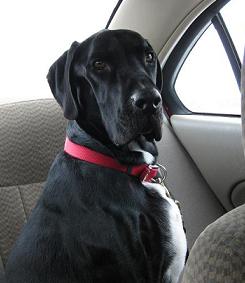
But then Ace decided he wanted to go everywhere Lindsay went. He did not want to be left behind in the car!
Lindsay’s plan to get her dog to stop barking in the car:
Drive to random places and get out of the car
Dogs learn by repetition, so she and Ace drove to random places, and Lindsay got out of the car and slowly walked away without him.
She walked about 10 or 20 feet away so she could still hear him. If he barked, she continued to ignore him and faced away from the car.
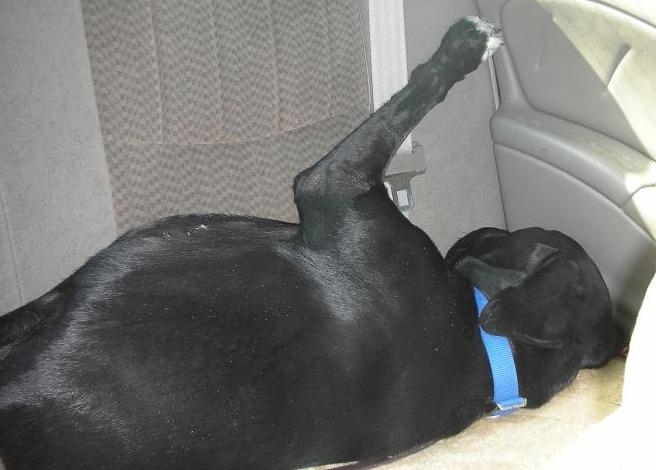
If he was quiet, she returned to the car and gave him a treat. Then she waked away again and repeated the process.
Once Ace was quiet for about three repetitions, Lindsay let him out. Even when they visited places like agility class where Ace knew he could normally come out, Lindsay left him in the car first. He got to exit the car only when he was quiet.
Reward when there is a pause in the barking
Some dogs, including Ace, will bark nonstop if they are very stressed. Even when this happens, Ace would eventually pause for a few seconds, and that is when Lindsay moved back to the car.
If he barked while she was moving towards him, then she turned and faced the other way again.
She needed to practice this several times over several weeks in Ace’s favorite places such as parks, the obedience club parking lot, the dog park and Petco.
She also practiced this in new areas where his anxiety would be even higher.
She practiced this in areas where there were not many people around at first so she didn’t look like a complete idiot standing 20 feet from her car in the cold.
Once Ace was successful, she parked the car close to buildings so she could walk around the corner out of his site but still be close enough to hear him. Again, if he barked she did not return. If he was quiet, she returned and rewarded him.
After sticking to this training routine for just a few weeks, Ace’s barking habit stopped completely and he learned to relax and wait patiently in the car again!
Don’t scold your dog when he barks, in this case
The biggest mistake many people make is to return to the car to scold a dog when he’s barking.
Unfortunately all this does is encourage the dog to bark. Most dogs like being yelled at. They think any attention is good, and they figure out really fast that all they have to do is bark and their owner will return.
Does your dog have any barking habits?
Let us know in the comment section!
Barbara Rivers writes regularly for That Mutt. She is a blogger, raw feeder, and dog walker and maintains the blog K9sOverCoffee.

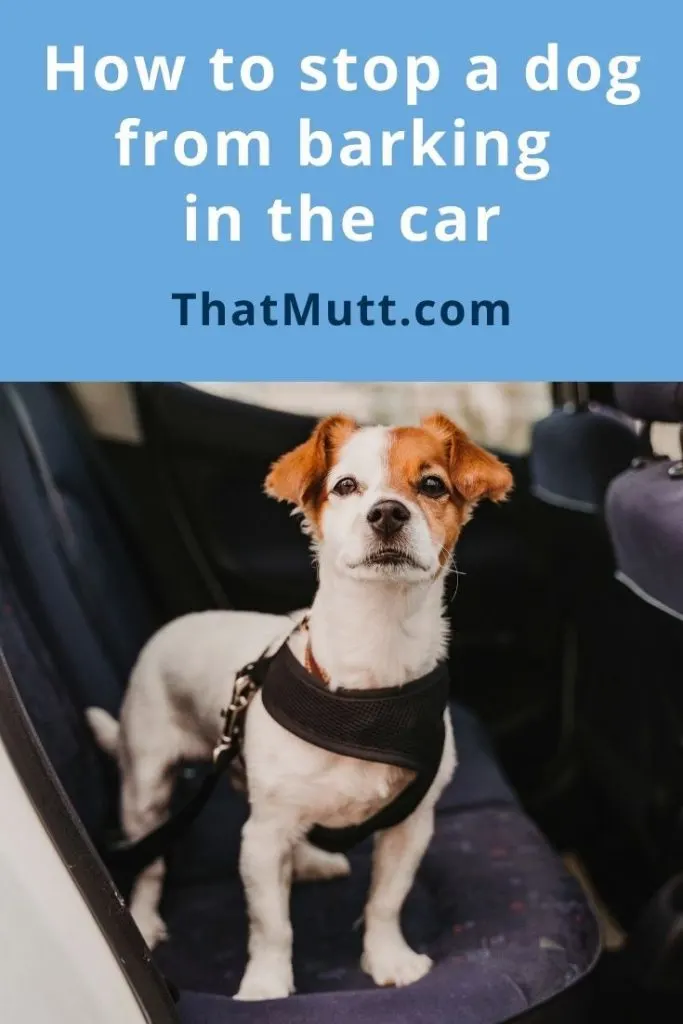
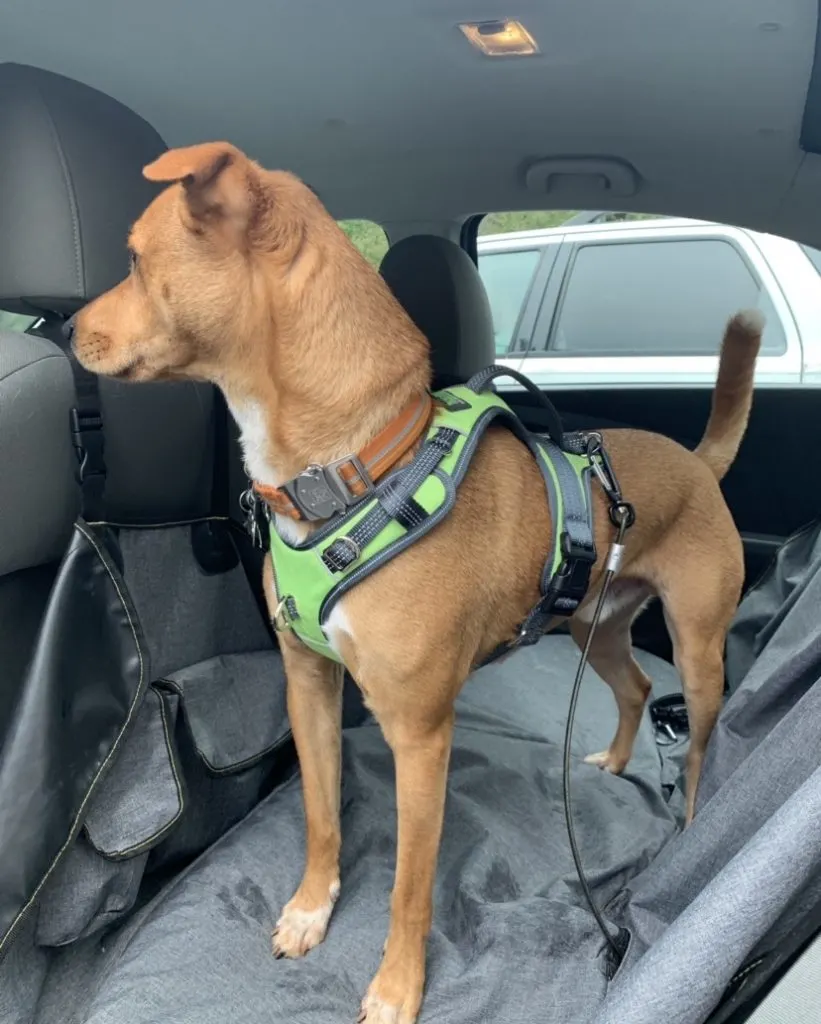
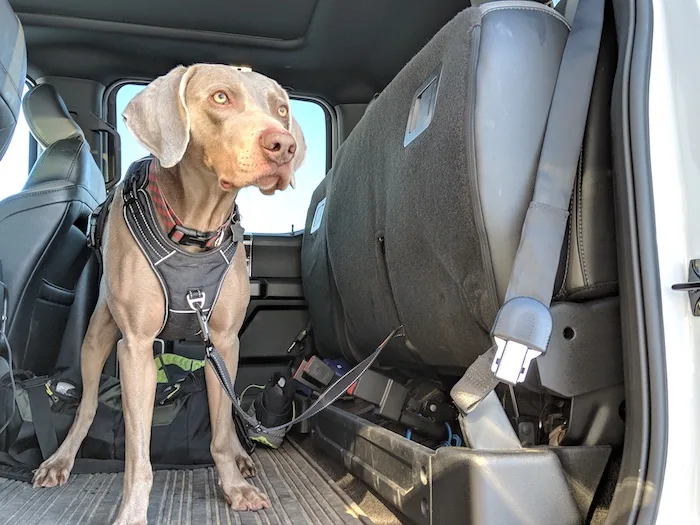
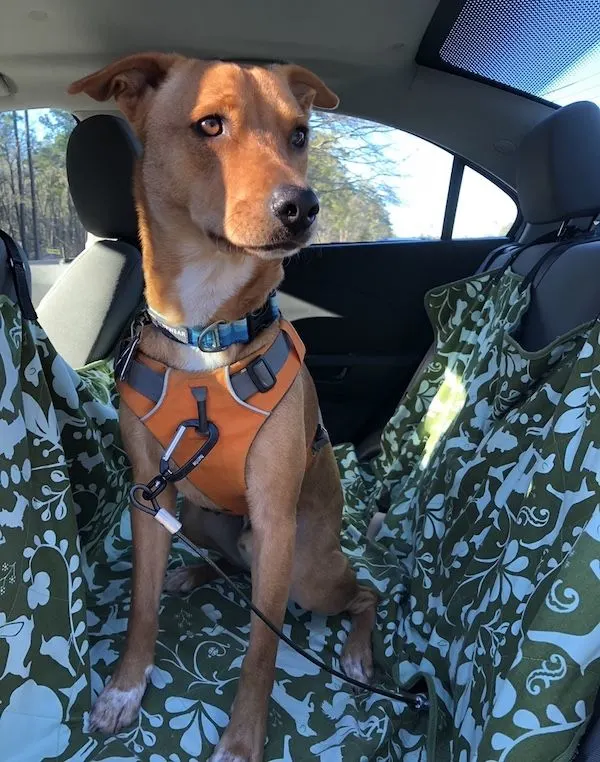
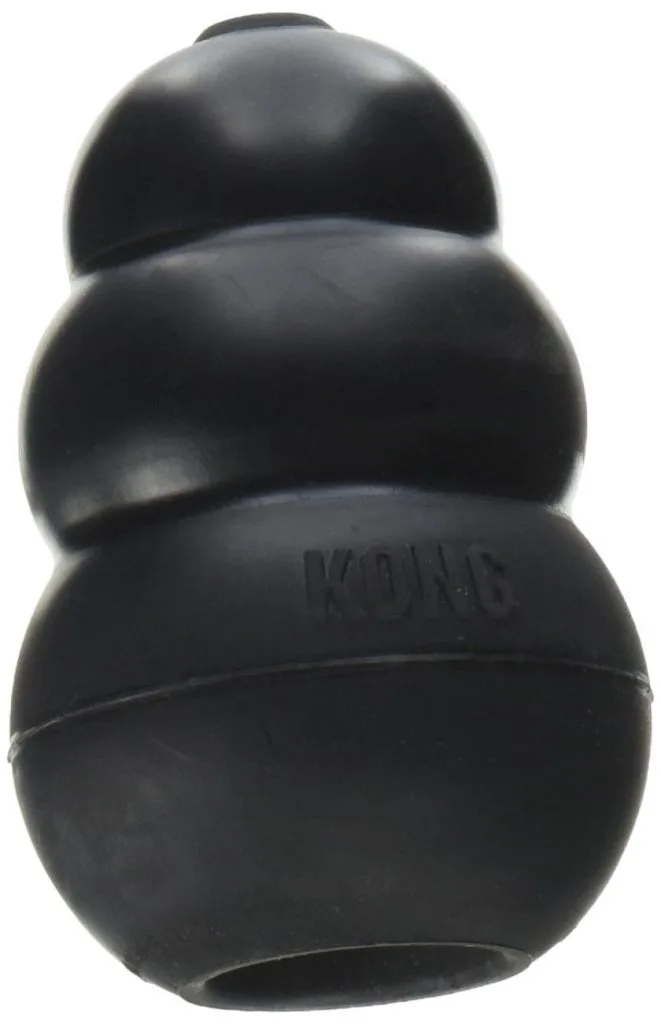
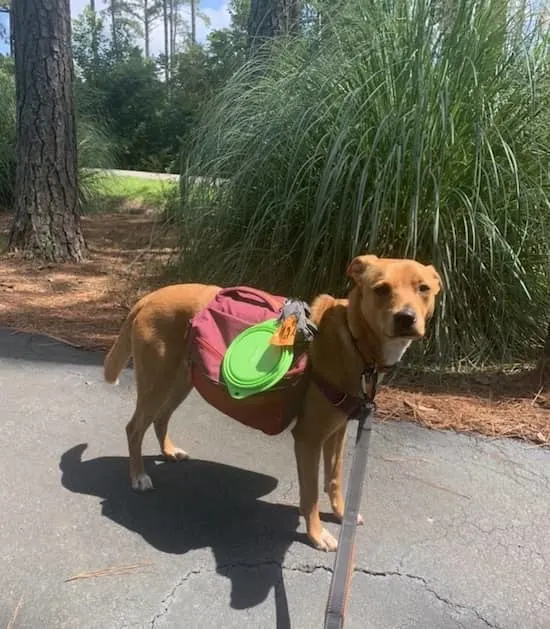
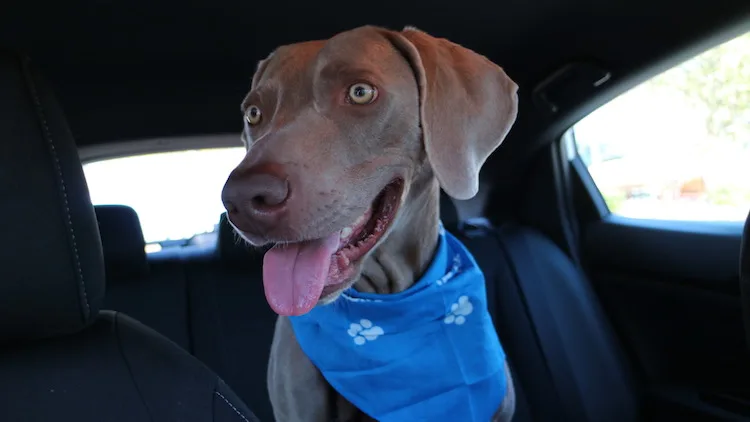
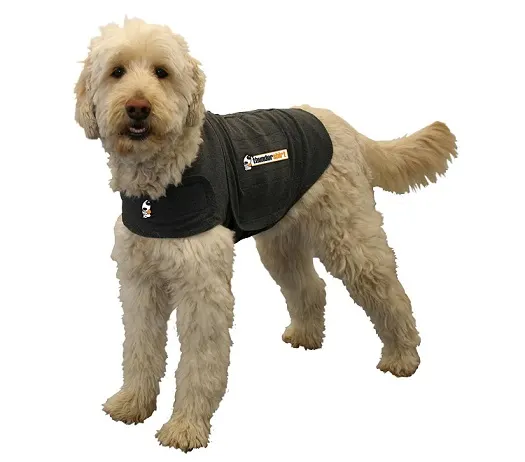
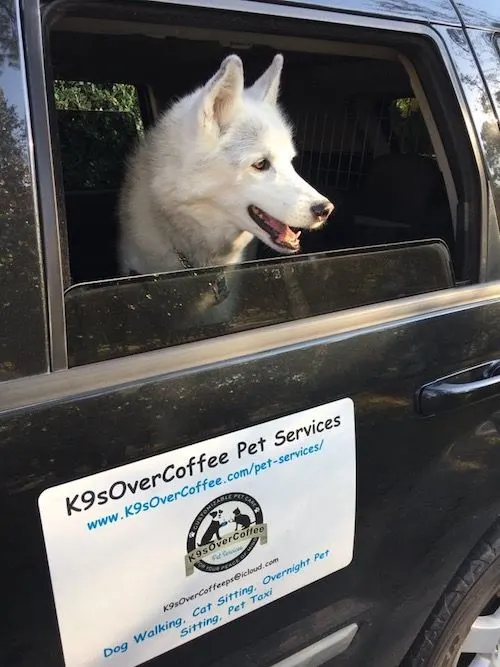
Maryann
Saturday 2nd of September 2023
My Holly rides great in the car ! Only when I get out she starts her barking uncontrollably, when I come back to the car , she laying in the back seat calmly! How do I deal with this?
Jean
Saturday 5th of March 2022
I am having huge problems with my puggle. He comes dverywhere with me and i have to leave him in the car sometjmes. He was fine until some weeks ago and now howls incessantley when i get out. I have had several peolle accuse me of sbuse because of it. He has seperation anxiety so i cant leave him at home. He is ,15 is it too late to try and train him
Lindsay Stordahl
Sunday 6th of March 2022
I'm sorry, that sounds stressful. Never too late to train but there's no quick fix for separation anxiety. I'm assuming he's to stressed to show interest in a Kong stuffed with peanut butter or canned food while you leave him in the car? Might also want to consider prescription anti anxiety medication for him from your vet, if you haven't.
sueki
Wednesday 15th of September 2021
that was great - my dog barks at me in the am when I am getting ready to go to dog park, then in the kitchen as we get ready to go and then in the car- She does stop for a few minutes when we get to dog park as I won't let her out and she knows that - but will reward Her and try Quiet next. thanks you have my email
Katy
Tuesday 14th of September 2021
My dog barks at other dogs and I can't get her to stop...Even when we go out for jogs
Dotty LeMieux
Monday 3rd of December 2012
I have two good sized dogs, they must go with me a lot in my small car. No room for one crate, let alone two. One has taken to barking fiercely out the window at dogs on the street, even people. The other whines, Sometimes the fist one snaps at the other, displaced biting I think. What would you suggest?
Lindsay Stordahl
Tuesday 4th of December 2012
Hi Dotty,
If you are comfortable with a shock collar, that could fix the problem for the barker. If you can control the barker, your other dog may have an easier time remaining quieter as well. You could either get a collar with an automatic setting that will correct the dog when it barks or you could get one with a remote so you control the corrections. There is also the option of a citronella collar that sprays the dog with the unpleasant citronella when he barks.
If you are not comfortable with the shock collar idea, I suggest taking them out in the car one at a time so you can work with them individually. Try teaching them to lie down or at least find a way to tether them to one area of the car with either a leash or a dog seat belt. Then, reward the dog with highly valued treats whenever he is quiet. You may need to simply park somewhere with high activity so you can safely focus on your dog. I would give a firm "No!" for barking and feed the dog treats for being quiet. Practice in short sessions every day.